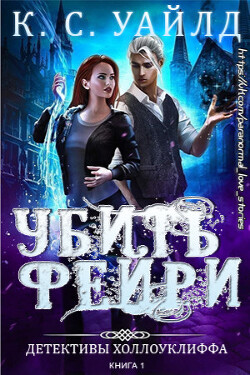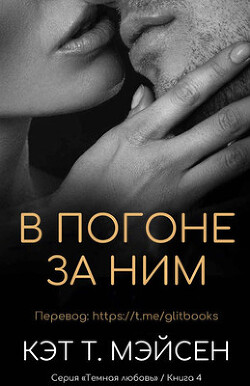Сборник статей - Россия и США: познавая друг друга. Сборник памяти академика Александра Александровича Фурсенко / Russia and the United States: perceiving each other. In Memory of the Academician Alexander A. Fursenko / Russia and the United States: perc

Помощь проекту
Россия и США: познавая друг друга. Сборник памяти академика Александра Александровича Фурсенко / Russia and the United States: perceiving each other. In Memory of the Academician Alexander A. Fursenko / Russia and the United States: perceiving each o... читать книгу онлайн
Klier shows that in the early 1880s Jewish interests received a hearing, informal but influential, within the Russian government. Besides the Gintsburg Circle’s personal contacts, an attentive, contentious, and vibrant Russian language Jewish press publicized Jewish views. Journals such as A. E. Landau’s Voskhod, or Sion, edited by Lev Pinsker – an acculturated, moderate physician, trained at Moscow University – argued the Jewish cause. The extent of Jewish acceptance of and acceptance into Russian society and its institutions has normally been overlooked in numerous studies whose leitmotif has been the exclusion of Jews rather than their inclusion. But the question of the actual integration of Jews into Russian Imperial society has receiving increased attention recently, most notably in Ben Nathan’s influential Beyond the Pale.[199] Natan Meir’s 2006 Slavic Review article continued that trend.[200] Meir’s book-length study of Jewish Kiev has not followed through with that theme; on the contrary, it has all but argued the converse.[201] From viewing the history of Kiev’s Jews as a part of the Russian mainstream, Meir has now put more stress on what set them apart.
His claim is twofold: By the late 19th Century Jews had become a dominant economic force in Kiev, when their rate of migration to the city outstripped all other groups, and when they became its largest non-Orthodox confession; and, at the same time, Meir contends, they had become a real community, despite the restrictions placed on Jewish residence, regular expulsions, and the unending enmity of the gentile majority. There is considerable truth to both claims. Under the leadership of their wealthy elite, headed by the Brodsky family, whose beet sugar fortune made possible their role as the principal donors to Jewish educational, religious, and welfare institutions, Kiev’s Jews found a permanent and indispensable, albeit precarious, position in the city’s social and economic life. The prominence of the Brodsky’s and other wealthy Jews both embodied and symbolized the commercial dominance of Kiev‘s Jews, who constituted 75 % of first-guild merchants within one decade of their first legal settlement in the city.[202] This dominance was complemented by the receptivity of Jewish hospitals and schools to gentiles, and both facilitated relations between open-minded members of the city’s Christian elite and wealthy, acculturated Jews.
Yet much of the book is inward-looking, treating the mutual relations among Jews and Jewish institutions. Kiev is little more than the stage setting for their affairs. The “Jewish Metropolis” of the title is thus an ambiguous characterization, suggesting Jewish hegemony, if not dominance, of a Slavic capital, but actually describing how the Jews constituted their own “metropolis”, self-sufficient and self-sustaining within the limits mentioned above. However, for a study set in the vibrant Russian and cosmopolitan center (arguably, the Empire’s third city) one misses a sense of Jews moving about in that larger urban, Slavic space. Even the acculturated and wealthy elite, the Jews’ most viable and influential link with the power and character of greater Kiev, is discussed principally in its relation with Jewish institutions and projects. No very concrete sense is evoked of how its members navigated their way in the alien yet attractive world of urban, modernizing Kiev. Does this represent a deliberate change of emphasis on Meir’s part, or simply an oversight, perhaps based on an implied understanding that the earlier article had treated the other side of the story and needn’t be repeated?
The case for the former possibility is strong. Assessing the communal nature of Kiev’s Jews must, in the first instance, take into account the severity of the conditions militating against community of any kind and leading to a tendency to draw together. Meir provides plenty of evidence of the obstacle to community formation among Kiev’s Jews. The only Jews legally allowed permanent residence in the city were first-guild merchants, and although other categories were granted temporary residence, the greatest number of the Jewish population were “illegals” in managing to live and even do business in Kiev without legal permission. Although that spoke to the bribability of Kievan officialdom and the resourcefulness of Jews in evading the law, legality was enforced frequently and harshly enough to make life in Kiev for most Jews an anxious and precarious experience, ever threatened with sudden expulsion. The hostility of most Russian, Polish and other Christian residents, reinforced by the known illegal status of most Jews and the open antisemitism of the city’s leading newspaper, encouraged the popular belief that Jews did not enjoy or deserve the protection of the law. That erroneous belief fostered frequent lawless, violent outbursts against Jews, especially after 1881, heightening the insecurity already felt from their residential status. It made Kiev not only a “Jewish metropolis”, but the capital city of antisemitism.
While all of this legal and extra-legal hostility toward Kiev’s Jews surely helped to draw them together against a common and seemingly ubiquitous enemy, it also created a tension between close community ties and the urge to acculturate or assimilate to Christian, Russian culture and society. To be sure, far from all Jews had the inclination or opportunity to adopt Russian ways, let alone assimilate or convert to Orthodoxy. Yet the bustle and opportunity for Jews in Kiev, indeed, the very closeness of urban relations, did encourage and maintain a steady, growing movement toward acculturation. The very prominence of Jews in trade to and from the city and the limits placed on Jewish residence made for much coming and going, meaning that community for many was a fleeting experience. Finally, the great wealth gap among Jews further divided the community in ways that the philanthropic nurturance of the needy by the wealthy elite could not completely offset. Wealthy Jews lived in different, more exclusive parts of the city from poor traders and workers. They insured cordial relations with state authority and their social ascendance among ordinary Jews by arranging the reelection of the same Crown Rabbi, who for over three decades protected the interests and provided religious legitimacy to the acculturated elite. For these several reasons, it would seem that the only reason to raise the question of community among Kiev’s Jews would be to note the anomaly that there was a community at all. Yet Kiev’s “Jewish Metropolis” functioned as a community of necessity that shielded Jews from a hostile and bigoted environment and that condition also engendered stronger and more meaningful common bonds.
Faith Hillis’s recent study of Kiev and Right-Bank Ukraine does not attribute any greater community cohesion to Kiev’s Jews, but it does place them within the larger political and economic framework of a city that was both more cosmopolitan and more bigoted than that described by Meir.[203] “Right-Bank Ukraine” comprised the pre-1914 provinces of Kiev, Podolia, and Volynia, and the book’s theme is the rise and decline of the “Little Russian” idea, a nationalist ideology nurtured in that region and stressing East Slavic unity and loyalty to the Russian autocracy. At first an “imagined community” that combined the East Slavs’ common origins in Kiev Rus’, Orthodox believers, and the exclusion of all non-Orthodox and non-East Slavs, the idea became, by the end of the 19th Century, an ideology of empire, embodied in a Russian nationalist political party. Although the study is not centered on Jews and their experience, Jews played a prominent part in the evolution of the Little Russian movement as active players in Kiev’s economic and political life and as an “indispensable enemy” that served to unify the often fractious Little Russia nationalists.
Jews were key players in the complex political struggle in 19th Century Kiev. Jewish commercial domination in Kiev and the Southwest served to shape the Little Russian claim to defend the Orthodox, East Slav peasant masses from their “exploiters”, Polish landlords and Jewish merchants. Little Russian intellectuals and elite spokesmen (who often had as little in common with the recently acquired peasant population of the Southwest as most Poles and Jews) drew on pre-existing class and ethnic prejudice to further their visions of national grandeur. In the process, the East Slav ideologists strengthened the appeal of their movement by amplifying the hatred and violence directed at both groups.
On the other hand, the severe and violent treatment experienced by Kiev’s Jews is traced not only to endemic antisemitism; anti-Jewish animus is shown to have been fed by a complex legal, economic, and political situation from which Jews drew benefits as well as woes and to which they were drawn in increasing numbers throughout the 19th Century. From a small number before 1859, when limited settlement was legalized, Kiev’s Jewish population rose from 13,000 in 1874 to 70,000 by around 1910, an increase in their proportion of the city’s population as well.[204]
Hillis’s study aptly supplements Meir’s with a compelling portrait of capitalist Kiev, a booming center of aggressive investment, speculation, and wealthy family dynasties, including Jewish families. This not only broadens the characterization of the city’s 19th Century history supplied by Meir and Michael Hamm[205] but broadens our notion of the Jewish experience in the city, still best known as the site of civil war pogroms and Babi Yar. Like John Klier’s broad account of the 1881–2 pogroms, Faith Hillis’s history of the Little Russia idea makes Jews as much a part of Russia’s history as the authors of their own, both a part of and apart from Imperial Russian society.
Yohanan Petrovsky-Shtern’s The Golden Age Shtetl treats the same three provinces as Hillis’s study, although in a lighter, though by no means less informative and well-documented manner.[206] Petrovsky surveys Right-Bank Ukraine from the viewpoint of ordinary Jews and Jewish pursuits in the period before Russia’s 1860s reforms, before the Haskalah‘s greatest influence, and before the 1881 pogroms redirected Russian Jewry toward an accelerated and socially disruptive modernization. He recreates a lost world of small town Jews and their assertive and enterprising pursuits as a foil to the standing stereotype of the shtetl attributed to Sholem Aleichem’s Tevye the Dairyman (or Fiddler on the Roof) as a rundown, poverty-stricken place where Jews were little more – outside their private lives – than victims of the Judeophobes and a predatory Tsarist government. Petrovsky’s shtetl, by contrast, was a lively place, where Jews controlled their lives, defied the law, competed and fought with each other and with gentiles, alongside whom they lived. If Jews suffered from being set outside Russian law, Petrovsky shows, many of them also profited from various outlaw roles. It is a world in which Jews held their own, apologized to no one, and mocked and ridiculed gentiles as much as gentiles did Jews.
The shtetl portrayed here stresses Jewish activities that pushed against bourgeois Jews’ self-image as well as against the limits of the Russian law: smuggling; liquor production, marketing, and monopoly; counterfeiting; even verbal and physical violence against gentiles and each other. The result is a kind of counter-stereotype with a tendency to essentialize Jewish life similar to that of the shtetl stereotype it is meant to correct. The gain, however, is a sharpening of the contrast with post-1860 Russian Jewry and a refreshing truth-telling about the reality behind some of the beliefs and practices of Jews fostered by antisemites. Negative stereotypes are transformed into signs of the vital energy and realistic adaptation to the restrictions and disabilities the government placed upon Jews. Each of the chapters on smuggling, liquor production and marketing, trade dominance, violence, etc. is copiously documented by a bewildering wealth of specific case studies drawn principally from archival sources in Ukraine, Russia, and Israel. The appeal of Petrovsky’s rich and locale-specific narrative all but conceals its hyperbole, lending it a kind of poetic truth about life in the shtetl.
Paradoxically, the one element that remains largely un-specific is the shtetl itself. Petrovsky is deliberately vague about defining the focus of his study except as a settlement of Jews and gentiles ranging in size between a small village and what otherwise have usually been considered towns and cities such as Berdichev, Uman, and Zhitomir.[207] Petrovsky’s shtetl is in fact not a particular place at all, but a way of life in which Jewish energy and acquisitiveness expressed itself in many forms and in which a greater ease and freedom existed among the shtetl’s mixed ethnicities and between Jews and the government. The survival of the power of Polish landowners in the region provided an ongoing buffer against the gradual encroachment of the Russian government in taxing and controlling the Jewish population. Jewish privileges thus waned along with those of the Polish grandees, who had functioned as indolent and unwitting protectors of some Jewish rights, such as trading in liquor.
Despite the more repressive means by which the Russian government sought to control the Pale’s Jews, Petrovsky contends that the Russian courts dealt with Jews more fairly and even-handedly in this period than later. The effectiveness of Petrovsky’s many concrete examples in veiling the literal truth of his assertions seems most questionable in this instance. Although its overall truth relies on the assumption that Jews generally received far worse treatment under the last two Tsars, the advent of the 1864 judicial reform alone and the greater participation of Jews in the judicial system suggest the need for verification of that assumption.
In sum, Petrovsky’s idealized image of the Pale’s pre-reform shtetl, in its broader outlines, serves as a counter-image to that later drawn by Aleichem and many Yiddish writers. Its importance lies less with its literal truthfulness than its usefulness in raising questions about Russian Jewry in both halves of the 19th Century. In the first instance, it offers a “new history”, an alternative to the image of the shtetl as a locus of victimization by documenting much of the diversity, assertiveness, and vitality of Jewish endeavors and occupations. It shows us that the Jews of the newly created Russian Pale of Settlement did not take their poverty and forced disabilities sitting down, but took advantage of the weaknesses in Tsarist governance and enforcement, the government’s rivalry with resident Polish landowners, and the venality of local officials to survive and sometimes even flourish in their shtetl enclaves.
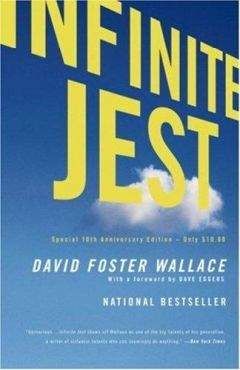

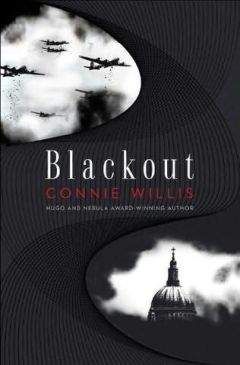
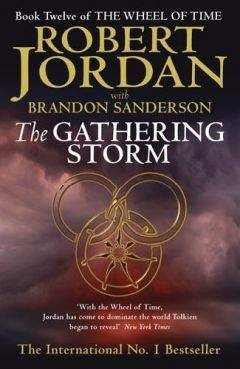
![Rick Page - Make Winning a Habit [с таблицами]](/uploads/posts/books/no-image.jpg)










